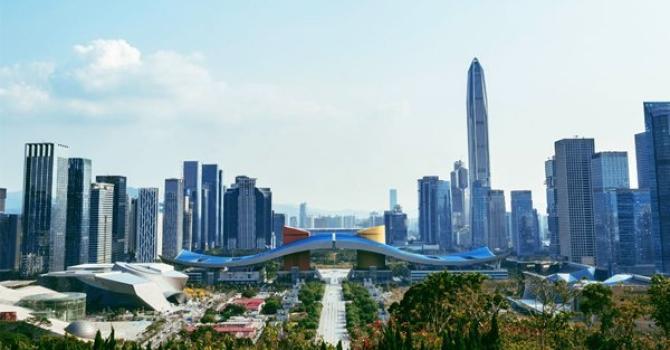How Hong Kong can take its 2035 Clean Air Plan further
Hong Kong can commit to the World Health Organization’s air quality standards by pledging to reach interim target three by 2035, and consider mandatory standards for indoor air quality
Air quality in Hong Kong has improved substantially, which is why it has not been a daily public complaint for some years.
The mid-1990s saw a dramatic deterioration in air quality because of insufficient local control, and also as pollution increased in neighbouring Guangdong as the mainland industrialised.
By last year, the local and regional air quality had improved through targeted control of local pollution sources by the Hong Kong government, and much better regional control too by the Guangdong authorities.
Since 2013, the mainland has made huge strides in air quality control. Cleaner air in Guangdong benefits Hong Kong. The pace at which the mainland is pushing air quality regulation alongside decarbonisation will only result in a cleaner and healthier region in the next 10-15 years.
The Hong Kong authorities have been successful in controlling specific air pollutants, and new plans announced in an updated Clean Air Plan for Hong Kong 2035 will result in further improvement.
Local electricity generation, already much cleaner than in 2000 with coal plants being replaced by natural gas plants, will mostly come from natural gas by 2035, with some renewable energy sources.
Emissions from ships and road vehicles used to pose a much higher health threat to Hong Kong people. Policies announced in 2013 for ocean-going vessels to switch to a cleaner fuel while at berth in Hong Kong, and a generous incentive scheme to phase out old commercial diesel vehicles (pre-Euro to Euro III) helped to reduce air pollution significantly. The scheme has now been extended to Euro IV vehicles.
Hong Kong’s mandate on ocean-going vessels helped to push the mainland authorities to reduce marine emissions by declaring emissions control zones along the whole Chinese coast, which has helped the nation to improve air quality.
At the same time, Hong Kong’s incentive scheme to phase out diesel vehicles is the biggest of its kind in the world, covering about 120,000 vehicles in total. As the old clunkers were the most polluting ones, their removal and replacement with new models, coupled with efforts to require better maintenance of LPG taxis, as well as requiring newer bus models to be used for urban routes, meant roadside air quality improved significantly.
A major challenge for both Hong Kong and the mainland is ozone. Ozone is created when pollutants from various sources react chemically. Sunlight and oxygen speed up the reaction, resulting in smog, which is particularly obvious when winds are low.
Ozone is hard to control because it is the result of complex chemical reactions. Hence understanding the science and using it to design control strategies is vital. The 2035 Clean Air Plan gives scientific management pride of place in policymaking.
This is significant in that the government is explicitly acknowledging that policies and plans must be made on the basis of scientific evidence. This may sound obvious but getting the science right requires long-term investments in people and systems.
The new plan lists specific investments in infrastructure and equipment to create better monitoring systems, which will require collaboration with scientists at universities in various fields, such as air science, meteorology, chemistry, big data, modelling, instrumentation and public health.
Such collaboration between officials and scientists is essential in solving complex problems, as well as in cooperating with the mainland, where enormous investments are going into solving the ozone problem while addressing climate change.
The application of scientific knowledge also needs to involve industries, which will have to comply with any regulations made. Thus, the “hard” knowledge of research needs to be matched with the “soft” skills of consistently engaging with stakeholders.
The challenge of addressing air quality and climate change concurrently, where the authorities in Hong Kong and the mainland expect significant improvements by 2035 before achieving climate neutrality by 2050 and 2060 respectively, has set ambitions beyond previous policy efforts.
With the publication of the 2035 Clean Air Plan, there are perhaps two further clarifications the government can make. It can commit to the World Health Organization’s air quality interim target three by 2035 – which is possible and represents a decent leap forward – and to signal that the time has also arrived for Hong Kong to regulate indoor air quality.
The interim target, a step towards WHO’s air quality standards, is achievable for Hong Kong and southern China by 2035. It would be an important achievement for the region and further improve the public health of its residents. It also shows other cities that are still mired in pollution that determined efforts do bring results.
Once the ambient air quality is better, it is time to deal with the air indoors. Indeed, research in Hong Kong shows it is already possible to improve indoor air quality to full WHO standards while improving energy efficiency at the same time, by the skilful use of filters and managing air exchange in buildings.
Hong Kong only has voluntary indoor air quality guidelines. It is time for the government to consider setting mandatory standards.
This article is written by Christine Loh, chief development strategist, Institute for the Environment, HKUST and board member of CDP Worldwide, London; and also Jade Yung who is a freelance content and creative writer. She writes about innovation in multiple disciplines, including arts and culture, wellness and sustainability.
The article has appeared on SCMP: https://www.scmp.com/comment/opinion/article/3140984/how-hong-kong-can-take-its-2035-clean-air-plan-further



